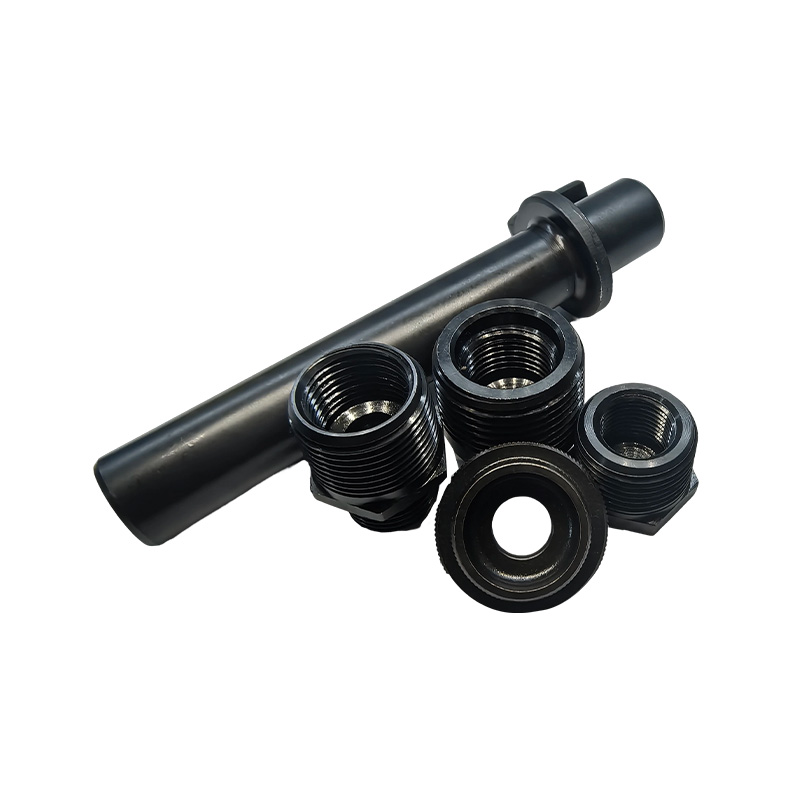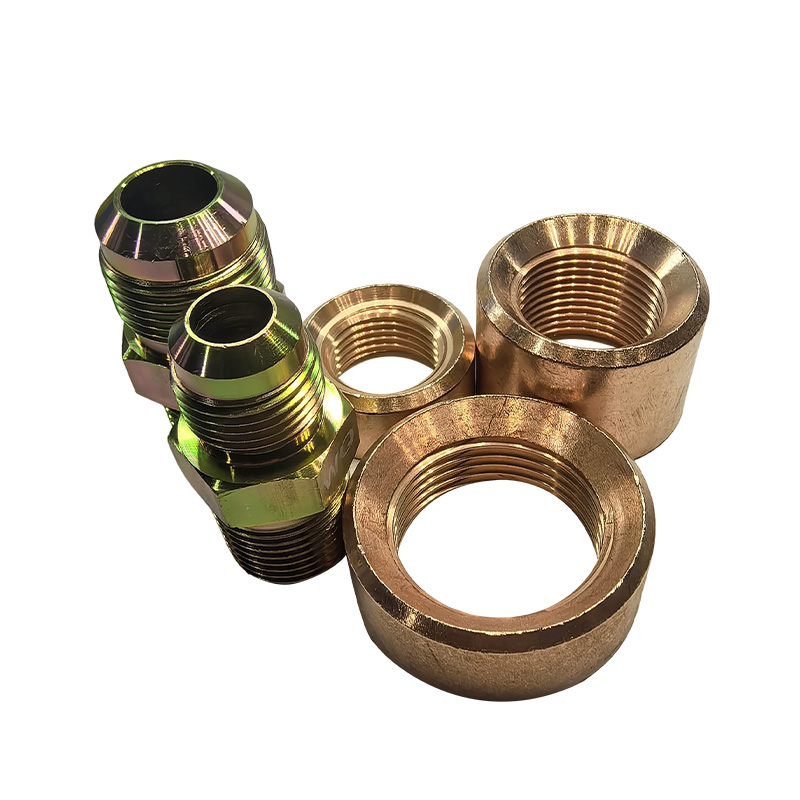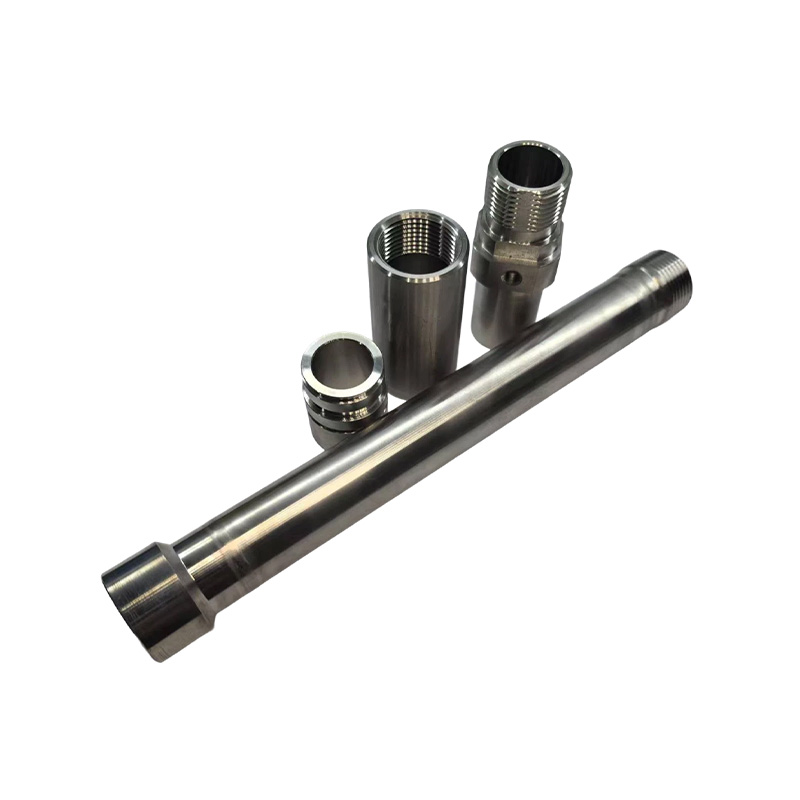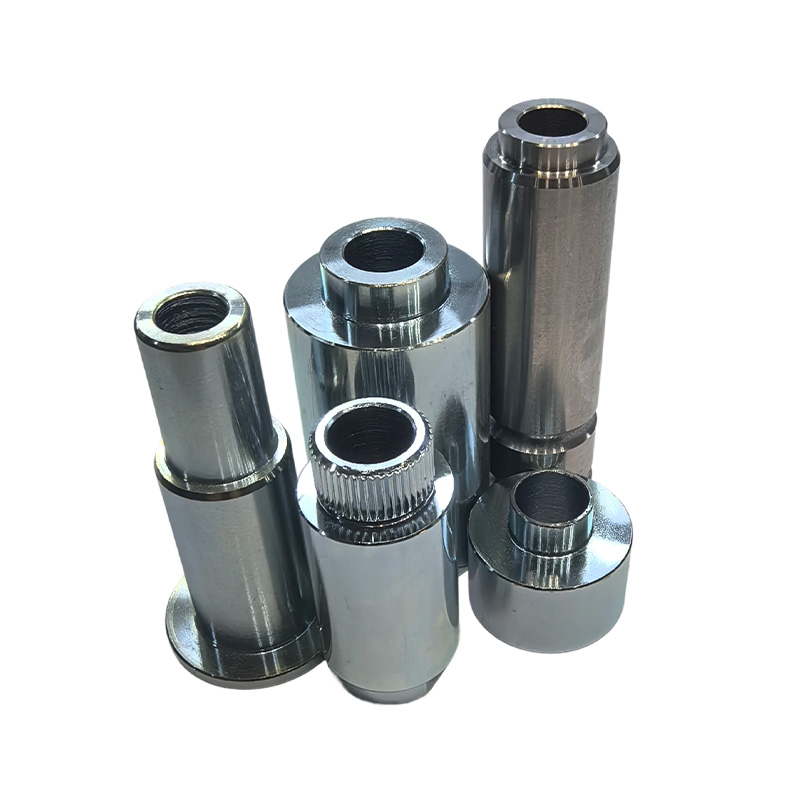How can tower crane connecting shafts ensure structural strength under extremely high loads?
Release Time : 2025-09-10
In modern construction, tower cranes, as the core equipment for high-rise building hoisting operations, must withstand enormous dynamic loads, bending moments, and torsional forces under complex conditions for extended periods. The tower crane connecting shaft, a core fastener connecting key components such as the tower body standard section, slewing bearing, boom, and counterarm, bears the heavy responsibility of transmitting loads and maintaining structural integrity. Under extremely high loads, the structural strength of the connecting shaft is directly related to the safe operation of the entire machine. Failure could potentially cause a catastrophic accident. Therefore, ensuring the structural strength of the tower crane connecting shaft under extreme loads is a top priority in design and manufacturing.
1. High-Strength Material Selection: Laying the Foundation for Load-Bearing Capacity
Tower crane connecting shafts are typically manufactured from high-strength alloy structural steel. After quenching and tempering, this material exhibits excellent comprehensive mechanical properties: high tensile strength, excellent toughness, and impact resistance. This combination of high strength and toughness enables the connecting shaft to resist plastic deformation and avoid brittle fracture when subjected to loads of several or even tens of tons. Materials are carefully selected through rigorous mechanical property testing and metallographic analysis to ensure that every batch of products meets national standards and industry safety regulations.
2. Optimized Structural Design: Improving Load-Bearing Efficiency
The structural design of the connecting shaft directly impacts its load-bearing state. Modern tower crane connecting shafts often utilize stepped or shouldered shaft designs, utilizing appropriate transition radiuses to reduce stress concentration. The shaft diameter is precisely calculated based on the load distribution to ensure a safe margin under combined shear, bending, and tensile loads. For particularly critical connection points, a hollow shaft structure is employed to reduce deadweight without sacrificing strength, lowering the crane's overall center of gravity and improving stability. Furthermore, precise positioning steps and mating surfaces are designed at the shaft ends to ensure perfect alignment with the hole during installation, preventing localized excessive stress caused by off-center loading.
3. Advanced Manufacturing Processes: Ensuring Full Material Performance
The full potential of high-strength materials requires precision manufacturing. Tower crane connecting shafts typically utilize processes such as CNC turning, precision grinding, and roller hardening to ensure shaft diameter accuracy and surface finish exceeding IT6 grade. In particular, rolling treatment creates a prestressed layer on the shaft surface, significantly improving fatigue strength and preventing microcracks. Furthermore, key areas such as shoulders, keyways, and thread roots undergo rounded polishing or shot peening to eliminate residual stress from machining and further enhance fatigue resistance.
4. Heat Treatment Strengthening: Improving Overall Mechanical Properties
Heat treatment is a key step in improving the performance of connecting shafts. Quenching and tempering not only increases material strength but also improves internal microstructure uniformity and enhances toughness. For areas requiring high surface wear resistance, medium-frequency or high-frequency induction hardening can be performed to create a high-hardness surface layer while maintaining excellent toughness in the core, achieving the ideal "hard outside, tough inside" condition. This gradient performance structure enables the connecting shaft to resist surface wear and crushing while also withstanding impact loads without fracture.
5. Strict Testing and Quality Control: Eliminating Safety Hazards
Every tower crane connecting shaft undergoes rigorous non-destructive testing before leaving the factory. Ultrasonic testing is used to inspect for internal defects such as cracks, inclusions, and shrinkage cavities; magnetic particle testing is used to detect microcracks on and near the surface. Additionally, random mechanical property tests, including tensile, impact, and hardness tests, are conducted to ensure that actual performance meets design requirements. Some high-end products also incorporate 3D scanning technology for comprehensive geometric dimensional inspection to ensure precise alignment with mating components.
6. Proper Installation and Maintenance: Ensuring Long-Term Strength
Even with the best design and manufacturing, incorrect installation can lead to premature failure of the connecting shaft. Therefore, tower crane connecting shafts must be installed strictly according to specifications, using a torque wrench to precisely control the preload to avoid overtightening (causing stress cracking) or undertightening (causing loosening and fretting wear). During regular maintenance, the shaft should be inspected for signs of deformation, cracks, or corrosion, and deteriorated components should be replaced promptly.
The structural strength of tower crane connecting shafts under extremely high loads is the result of a fusion of materials science, structural design, manufacturing processes, and quality control. From the selection of high-strength alloy steel, to precision machining and heat treatment strengthening, to full-process inspection and standardized installation, every step is crucial. It is the coordinated guarantee of these technologies that enables the tower crane connecting shaft to bear stable loads under extreme working conditions, providing solid support for construction safety.
1. High-Strength Material Selection: Laying the Foundation for Load-Bearing Capacity
Tower crane connecting shafts are typically manufactured from high-strength alloy structural steel. After quenching and tempering, this material exhibits excellent comprehensive mechanical properties: high tensile strength, excellent toughness, and impact resistance. This combination of high strength and toughness enables the connecting shaft to resist plastic deformation and avoid brittle fracture when subjected to loads of several or even tens of tons. Materials are carefully selected through rigorous mechanical property testing and metallographic analysis to ensure that every batch of products meets national standards and industry safety regulations.
2. Optimized Structural Design: Improving Load-Bearing Efficiency
The structural design of the connecting shaft directly impacts its load-bearing state. Modern tower crane connecting shafts often utilize stepped or shouldered shaft designs, utilizing appropriate transition radiuses to reduce stress concentration. The shaft diameter is precisely calculated based on the load distribution to ensure a safe margin under combined shear, bending, and tensile loads. For particularly critical connection points, a hollow shaft structure is employed to reduce deadweight without sacrificing strength, lowering the crane's overall center of gravity and improving stability. Furthermore, precise positioning steps and mating surfaces are designed at the shaft ends to ensure perfect alignment with the hole during installation, preventing localized excessive stress caused by off-center loading.
3. Advanced Manufacturing Processes: Ensuring Full Material Performance
The full potential of high-strength materials requires precision manufacturing. Tower crane connecting shafts typically utilize processes such as CNC turning, precision grinding, and roller hardening to ensure shaft diameter accuracy and surface finish exceeding IT6 grade. In particular, rolling treatment creates a prestressed layer on the shaft surface, significantly improving fatigue strength and preventing microcracks. Furthermore, key areas such as shoulders, keyways, and thread roots undergo rounded polishing or shot peening to eliminate residual stress from machining and further enhance fatigue resistance.
4. Heat Treatment Strengthening: Improving Overall Mechanical Properties
Heat treatment is a key step in improving the performance of connecting shafts. Quenching and tempering not only increases material strength but also improves internal microstructure uniformity and enhances toughness. For areas requiring high surface wear resistance, medium-frequency or high-frequency induction hardening can be performed to create a high-hardness surface layer while maintaining excellent toughness in the core, achieving the ideal "hard outside, tough inside" condition. This gradient performance structure enables the connecting shaft to resist surface wear and crushing while also withstanding impact loads without fracture.
5. Strict Testing and Quality Control: Eliminating Safety Hazards
Every tower crane connecting shaft undergoes rigorous non-destructive testing before leaving the factory. Ultrasonic testing is used to inspect for internal defects such as cracks, inclusions, and shrinkage cavities; magnetic particle testing is used to detect microcracks on and near the surface. Additionally, random mechanical property tests, including tensile, impact, and hardness tests, are conducted to ensure that actual performance meets design requirements. Some high-end products also incorporate 3D scanning technology for comprehensive geometric dimensional inspection to ensure precise alignment with mating components.
6. Proper Installation and Maintenance: Ensuring Long-Term Strength
Even with the best design and manufacturing, incorrect installation can lead to premature failure of the connecting shaft. Therefore, tower crane connecting shafts must be installed strictly according to specifications, using a torque wrench to precisely control the preload to avoid overtightening (causing stress cracking) or undertightening (causing loosening and fretting wear). During regular maintenance, the shaft should be inspected for signs of deformation, cracks, or corrosion, and deteriorated components should be replaced promptly.
The structural strength of tower crane connecting shafts under extremely high loads is the result of a fusion of materials science, structural design, manufacturing processes, and quality control. From the selection of high-strength alloy steel, to precision machining and heat treatment strengthening, to full-process inspection and standardized installation, every step is crucial. It is the coordinated guarantee of these technologies that enables the tower crane connecting shaft to bear stable loads under extreme working conditions, providing solid support for construction safety.







